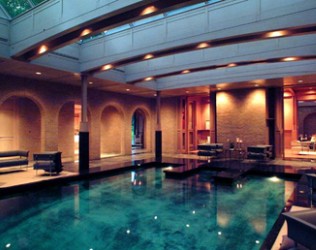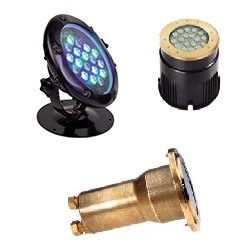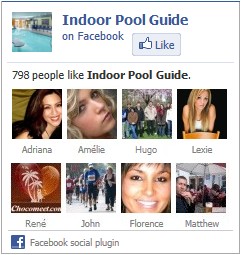
Lighting an indoor swimming pool can be very challenging. It is crucial to select the correct luminaire to ensure its longevity as well as correct light levels and low glare in the environment. However, at the top of the list of considerations is safety.
Also, you can find online many lighting system providers who explain how to setup the supply circuit safely around the swimming pool. They describe key rules as to the mounting height and location of electrical lighting near bodies of water, whether underwater or above water.
Types of swimming pool lighting
– Incandescent lights: This style of swimming pool lighting is the oldest setup giving out clear warm light. Although this form of lighting is very inexpensive it will cost you more in the long run as the bulbs only have a lifespan of approximately 5000 hours. This form of lighting is the least energy efficient and is now being replaced with more efficient forms of lighting such as LED’s.
– Fibre optic lighting: Fibre optic lights do not produce as bright a light as the other forms of lighting available so you will be required to purchase more to reach the desired light intensity. Fibre optic lighting does not use electricity so are very safe to use around water and are child friendly. Light is produced from a generating box which is located away from the swimming pool and the light is transferred via cable strands. Fibre optic lighting is perfect in creating designs on walls and for providing light to the landscape around your pool, creating a more attractive environment.
– Halogen lights: Like the incandescent lighting, halogen lighting is the older form of lighting available for lighting up swimming pools. Providing a bright white light, they last longer than incandescent lighting but repairs and bulb replacements must take place outside of the water.
– LED lighting: LED lighting is the most modern technology available having considerable benefits over halogen and incandescent forms of lighting. Until now the LEDs available on the market had not been able to produce the amount of light required reliably.
Benefits of LED lights include high light output, energy savings, long life up to 10 times that of a normal light, compatible with existing installations, easy to install, available in a variety of colours including amber, blue, cyan, green, red and white.
Despite the units initially proving to be quite expensive, they more than pay for themselves over time, consuming 75% less energy than incandescent bulbs. LED lights can last anywhere from 30 to 50 thousand hours and produce less heat and are made of a durable material. Most LED lighting systems come with programmed light settings and at the click of a button you can choose the colour of lighting you want at any given time.




